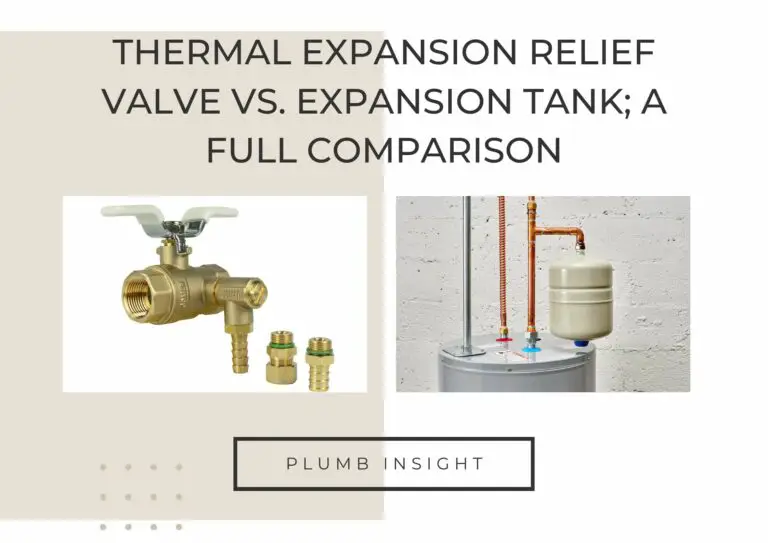Can You ProPress Soft Copper and M Copper? All Explained
ProPress, a popular method for joining pipes in the plumbing industry, offers efficiency and reliability. However, the question arises: Can you ProPress both soft copper and M copper? The answer, in short, is yes, but the details are essential.
This article delves into the compatibility of ProPress with soft copper and M copper pipes, explaining the differences between the two, and providing insights into the tools and techniques required for successful pipe connections using the ProPress system.
Table of Contents
What really is ProPress?

ProPress is a brand name for a specific type of copper pipe joining system that uses a mechanical press tool to create secure and leak-free connections. It is widely used in plumbing and heating applications. The ProPress system is designed for convenience, speed, and reliability in joining copper pipes without the need for soldering or welding.
Here’s how it typically works:
- Preparation: The ends of the copper pipes to be joined are cut cleanly and deburred to ensure a smooth surface.
- Fittings: ProPress fittings, which have a specific design, are used. These fittings have an integrated sealing element.
- Pressing: A ProPress tool is used to press the fitting onto the pipe ends mechanically. This tool exerts significant force to compress the sealing element and create a watertight joint.
- Quality Control: Some ProPress tools have built-in quality control features to ensure that the fitting has been properly pressed, reducing the risk of incomplete or faulty connections.
ProPress systems are known for their speed, ease of use, and reliability, making them popular in both residential and commercial plumbing installations. They are available for various pipe sizes and types, including copper, stainless steel, and PEX.
Should I Buy A House With Galvanized Plumbing? All Explained
plumbinsight.com
Can you Propress soft copper?

Yes, you can use ProPress fittings with soft copper tubing. ProPress fittings are compatible with a variety of copper tubing types, including soft copper. The key to a successful ProPress connection with soft copper is using the appropriate ProPress fittings designed for copper and ensuring that the tubing is clean and properly prepared.
Here is what is important to consider,
You certainly can use ProPress fittings with soft copper tubing. However, it’s worth considering that ProPress connections are permanent, so you might want to consider leaving the possibility of an unsold fitting in the future.
Sometimes, it’s more convenient to use a torch to remove fittings from soft copper, which leaves you with rounded ends for further work. This can be useful, especially when you’re planning to make adjustments or modifications in the future. So, while ProPress is efficient, it’s essential to think about the long-term flexibility of your plumbing system.
How to Propress soft copper?
ProPressing soft copper tubing is a straightforward process for creating secure plumbing connections. Here’s a simple 100-word guide:
- Cut and Deburr: Cut your soft copper tubing to the desired length using a tubing cutter. Remove any burrs or rough edges using a deburring tool.
- Select Fittings: Choose ProPress fittings compatible with your tubing size and type. Slide the fitting onto one end of the tubing.
- Position Jaws: Place the ProPress jaws over the fitting and tubing, ensuring proper alignment.
- Press the Connection: Operate the ProPress tool per the manufacturer’s instructions. Apply enough pressure to secure the fitting onto the tubing firmly. You’ll feel a distinct click when the connection is complete.
- Inspect and Test: Visually inspect the connection for proper seating. Perform a pressure test if needed to check for leaks.
- Repeat as Necessary: Repeat these steps for additional connections as required.
ProPressing provides reliable, solder-free connections for soft copper tubing in plumbing applications.
Can you ProPress type M copper?

Yes, you can use ProPress fittings with Type M copper tubing. ProPress fittings are compatible with various types of copper tubing, including Type M, Type L, and Type K. Type M copper tubing is a thinner-walled and more economical option compared to other types, but it can still be effectively joined using the ProPress method.
When working with ProPress fittings and Type M copper tubing, it’s crucial to ensure that you have the correct size fittings for your tubing and that you follow the manufacturer’s guidelines and recommended procedures for making secure and leak-free connections.
How to Propress type M copper?
ProPressing Type M copper tubing is a straightforward process for creating secure plumbing connections. Here’s a simple 100-word guide:
- Prepare the Tubing: Cut the Type M copper tubing to your desired length using a tubing cutter, ensuring clean, burr-free ends.
- Select the Fitting: Choose the appropriate ProPress fitting for your Type M copper tubing size and application. Slide it onto one end of the tubing.
- Position the Jaws: Place the ProPress jaws over the fitting and tubing assembly, ensuring they are aligned correctly with the fitting.
- Press the Connection: Operate the ProPress tool following the manufacturer’s instructions. Apply sufficient pressure to secure the fitting onto the tubing firmly.
- Inspect and Test: Inspect the connection for proper seating and perform a pressure test if necessary to check for leaks.
- Repeat as Needed: If you have multiple connections, repeat the above steps for each joint.
ProPressing Type M copper tubing provides reliable, solder-free connections for plumbing applications.
Should I Buy A House With Galvanized Plumbing? All Explained
plumbinsight.com
What are the pros and cons of ProPress?

Like any technology or technique, it comes with its own set of advantages and disadvantages. Let’s explore the pros and cons of ProPress:
Pros:
- Speed and Efficiency: ProPress is significantly faster than traditional soldering methods. It uses a press tool to join pipes in seconds, reducing labor time and costs.
- No Open Flame: Unlike soldering, ProPress doesn’t require an open flame, making it a safer option in environments where fire hazards need to be minimized.
- Consistent Seals: The press fittings ensure consistent, leak-free seals every time, reducing the risk of water damage and callbacks for repairs.
- Versatility: ProPress works with various materials, including copper, stainless steel, PEX, and more, making it suitable for a range of applications.
- Clean and Quiet: It produces minimal noise and eliminates the need for flux and solder, resulting in a cleaner work area.
Cons:
- Cost: The initial investment in ProPress tools and fittings can be higher than traditional methods, but this cost may be offset by time and labor savings.
- Skill and Training: While it’s faster, ProPress requires specific training and skill to operate the press tool correctly. Improper usage can result in failed connections.
- Limited Access: The size and design of the press tool can make it challenging to use in tight or confined spaces.
- Repair Difficulty: Once a connection is pressed, it cannot be easily disassembled or repaired. This can be a drawback if changes or modifications are needed later.
- Compatibility: Not all materials or pipe sizes are compatible with ProPress, so it may not be suitable for every plumbing project.
In conclusion, ProPress offers significant advantages in terms of speed, safety, and reliability, making it a preferred choice for many plumbing professionals. However, it may not be the best fit for all situations, and its cost and training requirements should be considered when evaluating its use in a specific project.



